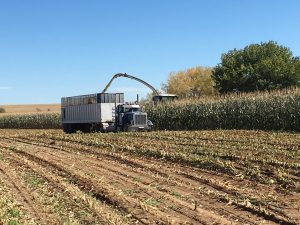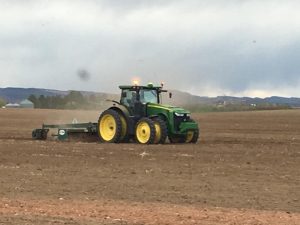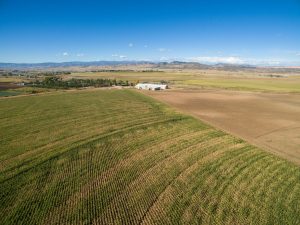Expert Advice – Buying & Selling Hunting Land in the Midwest
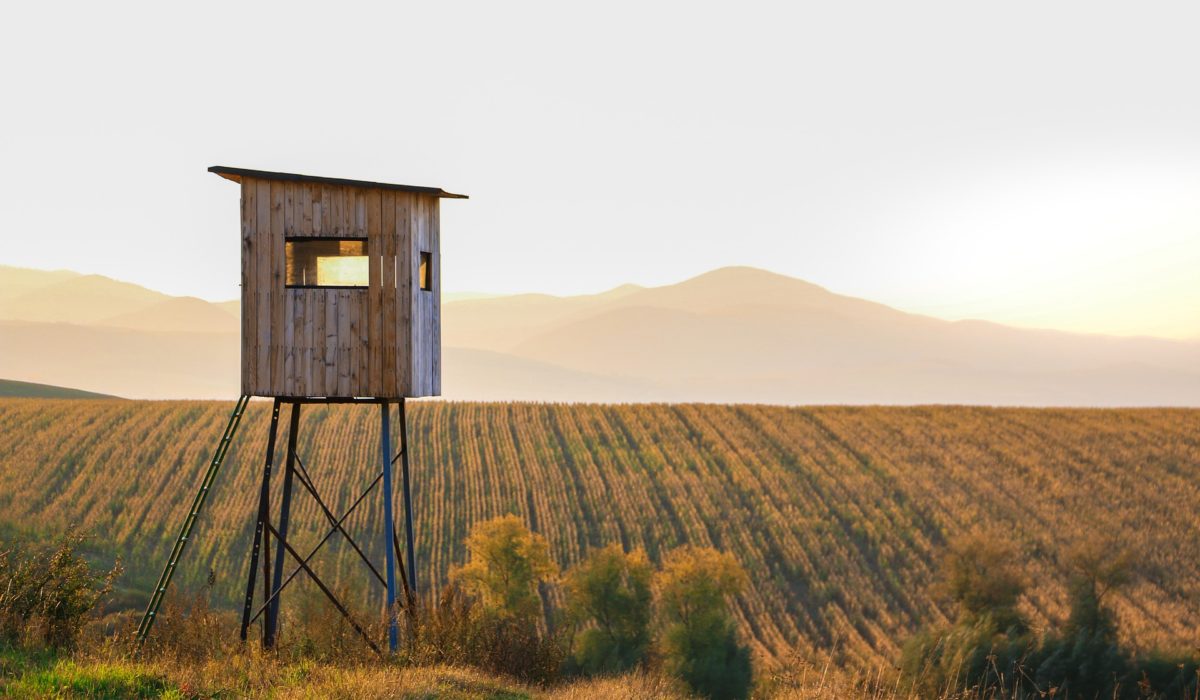
Allen Treadwell is many things – professional real estate agent for Hayden Outdoors, a contributor to the company’s leadership team, former Olympic shooting athlete, member of the exclusive Bass Pro Hunting team since 2003, television host of Life on the Land, expert whitetail, turkey, waterfowl and upland game hunter, father and husband.
One thing he is admittedly not? Desk jockey. “I can name every tree on my land, every species of animal out there, but I’m not great at Zoom.”
This is also why Allen is so good at his job as a Hayden Outdoors recreational real estate professional – his understanding of the land, its purpose, productivity, and profitability run deeper than most. He might not be an expert at online conferencing, but that’s because he doesn’t spend his days in an office, stuck behind a desk or staring out the window. He’s out there, scoping the best hunting land opportunities, walking large-acre parcels with clients, and homesteading his own couple hundred acre farm in southern Missouri.
“At Hayden Outdoors, most of us don’t just sell land; we live on the land. It’s our heritage and our passion.”
When it comes to Allen’s selling region of Arkansas, Kansas and Missouri, that passion rings true in every word. We asked him to give us some insight into buying hunting and large-acre land in this nostalgic and plentiful corner of the country.
3 Key Reasons Why People are buying Hunting land in Arkansas, Kansas and Missouri
1. The Land is Productive & Affordable
I think part of what is driving people here is how affordable the land is for being as productive as it is. With the price of land skyrocketing across the rest of the country, you can still get a sizable hunting or farming property in Kansas, Arkansas, or Missouri for an affordable price. Yes, interest rates have gone up, but they’re still relatively low compared to the past 30 years. Where I live in southern Missouri, if you own the land, you can hunt it. Every year. I think that’s a big deciding factor.
We see a lot of folks moving out of cities, or out of other places in the West that have simply become unaffordable, and buying in this area. They want 10 – 40 acres to themselves, where they can have a small garden, greenhouse and some animals. It’s becoming increasingly important for people to feel self-sufficient, and to raise their kids outside in the open land and open air.
2. Quality Climate Year-Around
The climate is also an important consideration. In a normal year, we typically get upwards of 40 inches of rainfall while our temperature fluctuations are relatively minimal. We usually don’t see temps above 100 or below zero. This makes for some really productive acres and friendly wildlife habitat. Land in Kansas, Arkansas, Missouri – these pieces of real estate offer folks the opportunity to become modern homesteaders, farming, hunting and exploring their own land.
3. World Class Hunting Opportunities
The hunting opportunities in the Midwest are incredible, especially for deer and turkey. You can even get those tags over the counter in many of these areas. There’s no draw system for Missouri & Arkansas, however, if you want a guaranteed landowner tag every year in Kansas – you must own at least 80 acres. (Be sure to check local hunting and game harvest laws in each state for up-to-date regulations.)
While other parts of the country are seeing a real estate slowdown, farms, ranches and recreational property sales in Kansas, Missouri and Arkansas don’t show any sign of slowing or devaluing. It’s a very good place to put your money; a very safe place to put your money.
How can you make Improvements to your Hunting land?
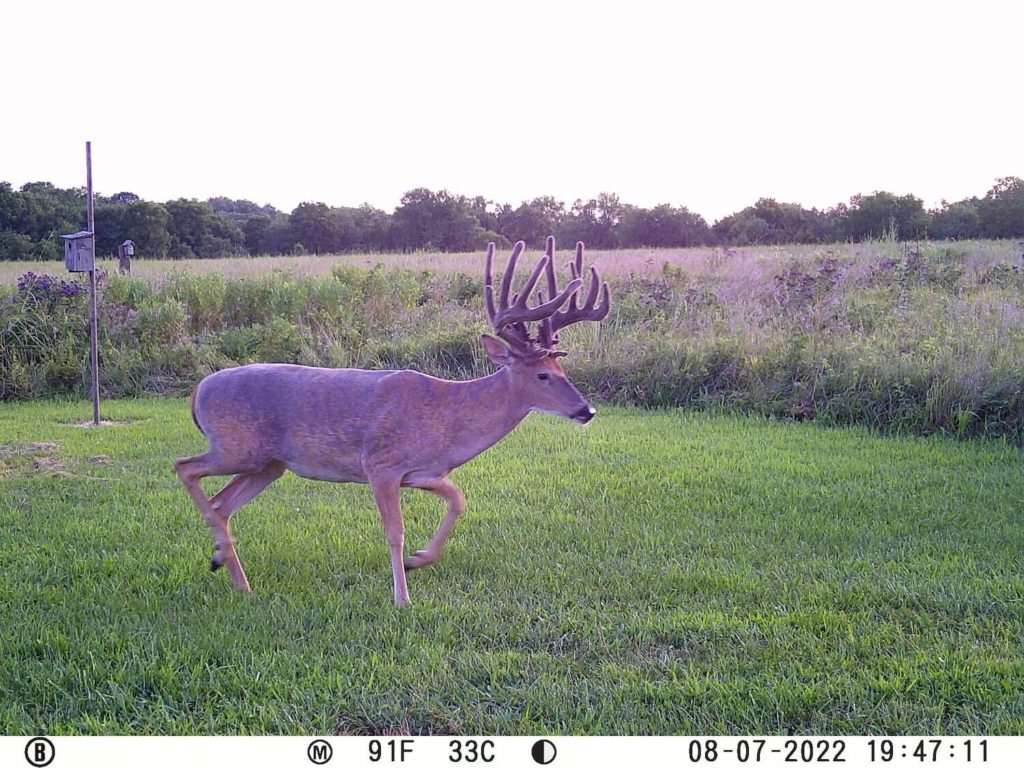
Tips for Increasing the Value of your Hunting Property:
– road maintenance (and possibly new roads),
– Repairing existing tree stands
– maintained food plots
– a history of trail cam and harvest photos and videos – anything you can add to your hunting property while you own it will return at the closing table.
As an example of land improvements you can make, Allen currently has some friends who bought a large parcel that was thick with old-growth timber. They went in and put in a road system and food plots, both of which make the land much more productive for either forest management and timber harvesting or hunting (or both). If they sell it, they could definitely do so for more than they bought it for.
Recreational properties are at an all-time high as far as value is concerned. Everyone believes their farm or hunting land should bring in the highest dollars, but not everyone has the talent of making the land great. Allen helps his clients identify what they can do to improve the property and maximize the value of the land.
Anything you can put into the land to make it better, you will get back when you go to sell it.
Why you need to have a Recreational Agent When Buying & Selling Hunting Land
If you’re in the market to buy a hunting property, I think it’s very important to find a good recreational agent who can represent you; someone who walks properties every day and will know – even faster than the buyer does – what a good property is. As a recreational agent, when I get excited about a property, the buyer I’m working with gets excited about it, too, because they know I can identify the value in it.
If you are selling a hunting property, you must have a recreational agent – someone who understands hunting, can talk hunting, and knows how to identify, buy, or sell a recreational property. For example, to get the most out of a whitetail deer property, the agent needs to know everything about whitetail deer hunting.
Additionally, my job as a buyer’s agent is to ask the buyer questions: What are you looking for in a hunting property? What do you want in your farmland? At Hayden Outdoors, that’s our number one goal, to represent both buyers and sellers with our expertise and levels of care. That’s where we outshine other agencies. We care about our clients and we do what’s right by them.
The Experience Allen Brings to Hayden Outdoors
As an Olympic athlete and avid hunter, Allen has traveled the world. He has competed in countless countries, and shot on every continent except Antarctica. Yet, these days, you’ll find him content at home, in his coveted corner of Missouri. He explores real estate opportunities for his clients, or helps them prepare a property to sell. He’s a dedicated member of the Hayden Outdoors team. “They run the company as a family, and everyone feels that. It’s so, so important.”
He also spends his time wandering his own property, his six-year old daughter bopping behind him. He now gets to teach her how to spot a hidden whitetail deer or flock of turkeys, feed the cows, and harvest the garden bounty. Ask him about all of it, and Allen sums it up well, “I’ve been very fortunate. Now I like to share my experience with others.”
To learn more about hunting property opportunities in Missouri, Arkansas, or Kansas, contact Allen or a Hayden Outdoor real estate professional.

Hayden Outdoors Represents Tennessee’s Largest Mine for Sale
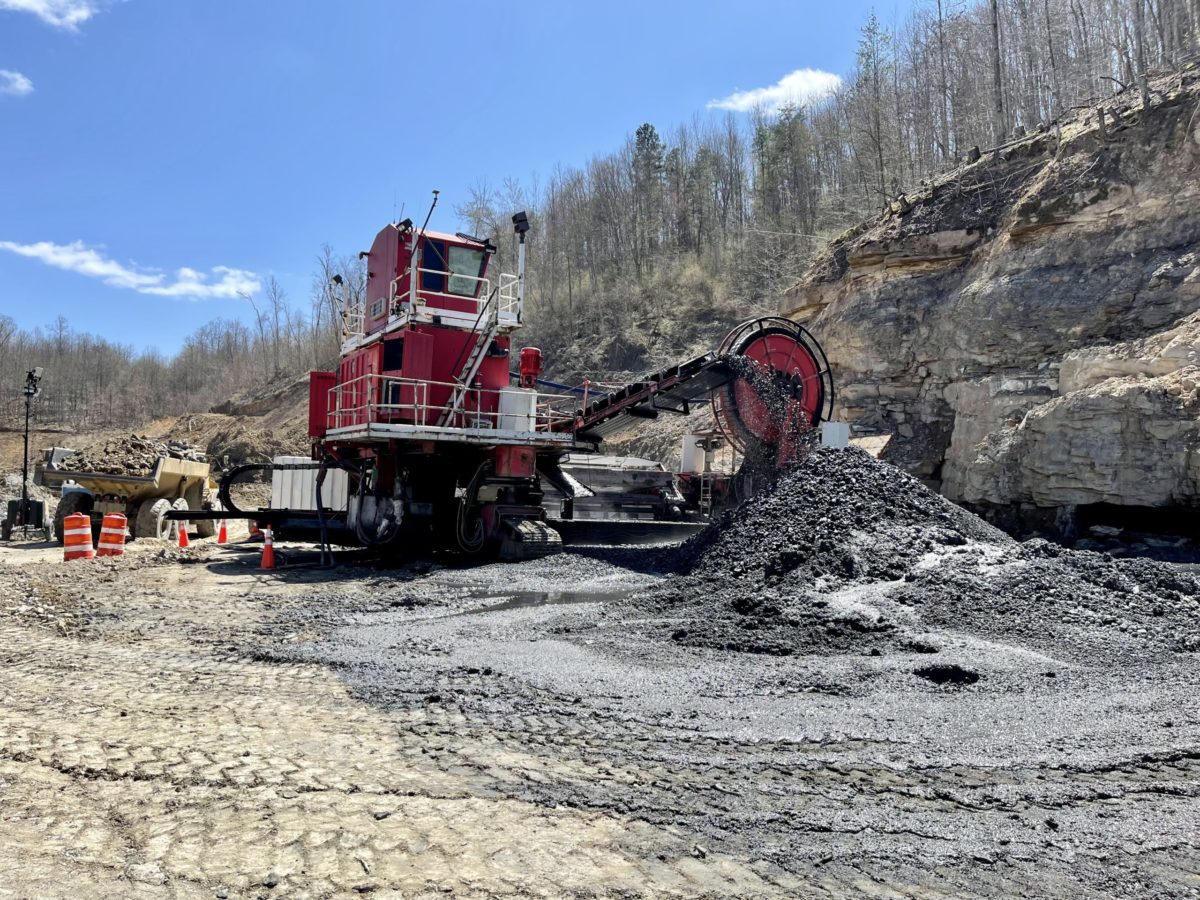
Over $11.5B Worth of Blue Gem Coal Available On This Property
Elk Valley is located in Campbell County, Tennessee, 50 miles north of Knoxville and about 25 miles south of Williamsburg, KY. Here lies over 8,000 acres and one of the most lucrative listings in the state of Tennessee with an estimated $11.5 billion worth of Blue Gem Coal, making it one of the best natural resource investments on the East Coast.
Blue Gem Coal is a scarce substance and one of the most highly valued grades of coal in the world and is recognized among industrial users for its very low ash and sulfur contents and extremely high grade. It is found in only 3 states in the US and is used to make solar panels, cell phones, and other critical technologies and commodities used around the world by consumers and businesses alike.
Located in the heart of Elk Valley, this rare property for sale is an ideal investment opportunity that boasts the largest proven underground reserve of Blue Gem Coal in the Southern Appalachian Mountains. Elk Valley holds additional profitable natural resources on the other properties, such as timber, and natural gas. According to Hayden Outdoors broker and land specialist, Heath Thompson, “With Elk Valley having the largest proven underground reserve of Blue Gem Coal in the Southern Appalachian Mountains and the going rate of $350 per ton, the potential earnings from one natural resource is in the billions.”
Thompson explained more about the Tennessee land for sale, “Ketchen Holdings offers the investor or buyer a portfolio of properties with recoverable natural resources. There are 4 mineable tracts unique to this specific region of TN that offer over 33 million tons of coal including Blue Gem Coal, over 160+ million tons of Silica Sand, merchantable timber, numerous natural gas wells, and a major natural gas pipeline. The combined estimated value of Blue Gem Coal and Silica Sand is around $25 billion dollars. Making it extremely lucrative to the right investor. The royalties from natural gas and income from other revenue streams such as hunting leases or merchantable timber are an added benefit.”
- Elk Valley | $17.5M | 8128 ac. | 33M tons of Blue Gem Coal | $350 per ton | $11.5B estimated total value
- Buffalo Tract | $2.1M | 1272 ac. | Natural Gas
- Mars Sand Mountain | $8.9M | 1976 ac. | 160+M tons of Silica Sand | $96 per ton | $15.3B estimated total value
- Westbourne Mountain | $9.1M | 4115 ac. | 9.7M tons of Thermal Coal
- Total Price for all 4 properties: $37.6M | total acreage: 15,491
To learn more about adding this natural resources investment property to your portfolio, please contact Heath Thompson at Heath@haydenoutdoors.com | (912)536-5151
5 Things to Do Before Selling Your Farmland

Steps to Take Before Selling Farmland
Your farm might be a legacy property – a way of life that has been passed down from one generation to the next for centuries. It might be something you ventured into more recently. Either way, if it’s come time to sell your workable land, consider some key things before you do. Hayden Outdoors Director of Sales John Herrity has some tips on the important steps to take before selling your farmland.
As a farm boy himself, his insight is particularly valuable. John was raised on his family’s homesteaded farm in Elk Point, South Dakota before pursuing a career as a row crop farm appraiser, construction manager, fishing boat captain and real estate professional.
“Farmland sales can be complex. There are so many considerations that go into properly valuing farmland, including soil type and rating, percent tillable, the current ownership model and accurately mapping the property. It’s important that sellers and their real estate team be very diligent in doing the work up front before listing the land.”
1. Determine the Ownership Model
Establishing how many people or entities currently own the land is a great place to start. Is this a family farm property with one name on the title, or do multiple people have a stake in the land? If there are multiple owners, is everyone on the same page in wanting to sell? Is there a power of attorney for the owner or ownership group? The ownership model will determine how easy or more complicated the sale will be, including how sale profits will be divided.
2. List all Debt, Liens, Easements & Encroachments
Owning the land free and clear is obviously the most straightforward way to sell it, however, farms are large, working entities that often require equipment loans and easements to keep them running. Talk with your real estate professional about any debt currently associated with the property, including liens on outbuildings or farm equipment. Easements are another important thing to consider. Because farms tend to be multiple acres in size, they often come with one or more easements to adjacent land that permit access for one property owner or another. Buyers will want a complete understanding of these easements before purchasing. Encroachments (features that wrongly extend onto your farm from a neighboring property, e.g. an old fence) can be another obstacle to selling farmland and, ideally, should be rectified before listing your property.
3. Map It Out
Let the Hayden Outdoors team create a land map that accurately shows every aspect of your property. Our agents and brokers are experts at MapRight, a dynamic land mapping software. These maps show property boundaries and easements, soil surveys, parcel data, GIS layers, buildings, fence lines, and more. A proper map is elemental for prospective buyers, and can also tell a farm’s history and story in a very visual way.
4. Establish the Soil Type Classification & Land Survey Comparables
While soil type and productivity sits as a pretty important piece of the farmland sale puzzle, it can also change from one producer to the next. Any future buyer will work to produce their own yield and establish their own style of management. That’s why it’s important for your real estate professional to carefully consider your soil type. A variety of agencies, agriculture-based Universities, and websites can help determine the value of your soil type by region. Once you and your agent have established the value of your soil, they’ll help give you a look at similar sales in the area. Pricing the property based on price per soils ratings relative to nearby farms is a good starting point. If you have recent appraisals, these can help determine the marketable value for your farm.
5. Understand the Tax Implications or Penalties of Selling Your Farmland
When it comes time to sell your farmland, John suggests talking with a CPA to discuss options with 1031 exchanges to see if this is a possibility for their sale.
“I coach clients to get good advice from their accountant. Establish what the basis of the land is. If you inherited the farm and it’s been in the family forever, it will have a much different basis and tax implications than a farm that was bought in the last ten or twenty years.”
Selling your farmland might seem like a daunting task, logistically, legally and emotionally. But with the right guidance and proper resources, it can be a very freeing and lucrative endeavor. The real estate professionals at Hayden Outdoors know the ins and outs of selling farmland in a way that benefits the seller, the buyer and the land itself. The team has been doing it for 45 years, and like John, many are also farmers and ranchers themselves. They’re happy to help you navigate the complexities of selling your farm. Give them a call today to learn more.
Top 5 Considerations When Buying Waterfront Property
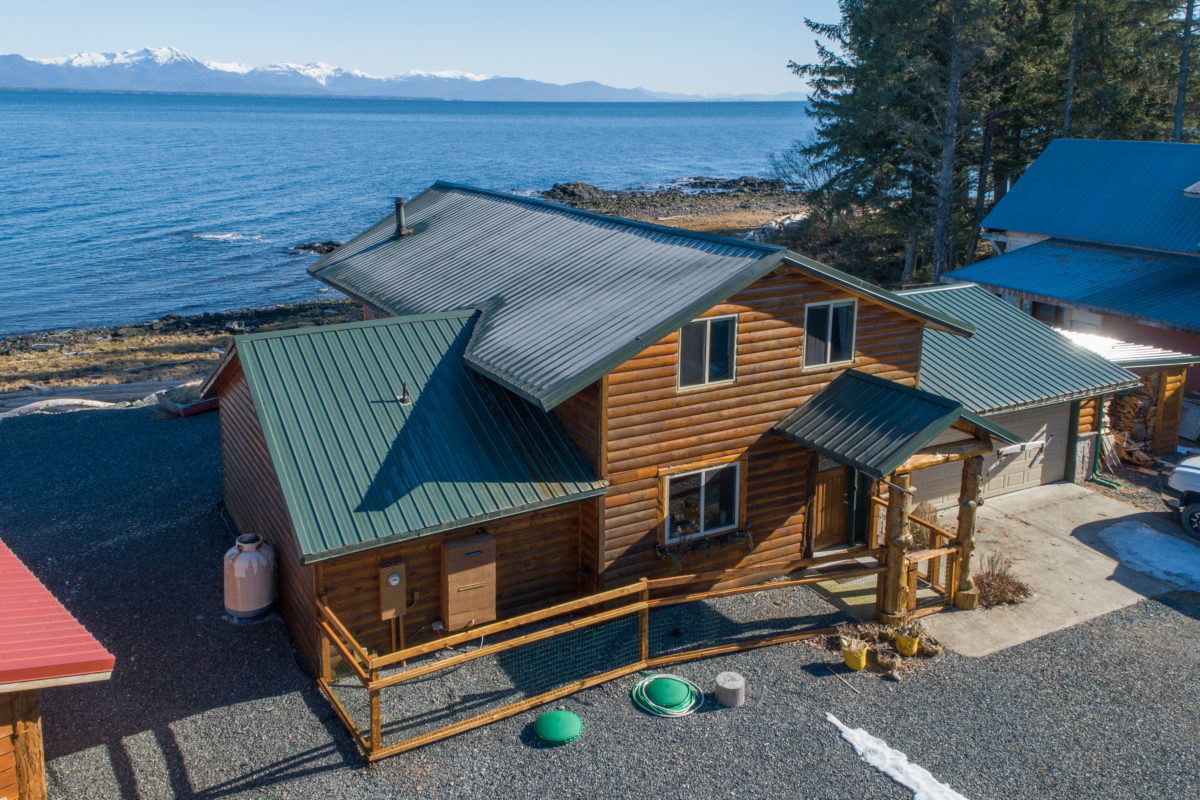
A Waterfront property can be an idyllic escape from the everyday with its picturesque sunsets, enticing shores, and opportunities for recreation. It can also present some additional considerations for property owners.
Top 5 most important steps to consider before buying an ocean, river, wetland, or lakefront property.
1. Taking a thorough Property Inspection
It’s important to determine if the home or property you’re considering buying can withstand the water surrounding it. Waterfront properties are often located in wetland areas, flood zones, or along river banks that see rising water levels every spring. Make sure any structures are far enough from high water marks that they won’t experience seasonal water or flood damage. On structures, look for quality structural support, such as stilts/pilings, storm shutters, and a solid foundation. If the home has flooded previously, inspect that it was remediated properly so that there isn’t hidden mold in the walls or in the cabinetry. If on the ocean or lakefront, check the quality of the seawall, lake wall, or rip-rap edge. Consider the garage or storage shed – is it big enough to house all of your recreational equipment, including boats, canoes, kayaks, stand-up paddle boards, and jet skis? If the property has a dock, is the dock a legal length and does it have a boat lift and cover? Something to consider is the maturity (size) of the sand dunes on oceanfront properties, which can help protect the property against storm surges. On riverfront properties, where is the high water mark in relation to structures? What is the recreational condition of the river for fishing and water sports?
Southeast Regional Manager and Florida Native Greg Liddle provides additional suggestion and mentions that “Homeowners should be aware of the depth of the water at their boat dock during low tide and winter months. While it might be plenty deep during their showing, some areas can become so shallow that homeowners can’t take their boat out during other parts of the year.”
2. What Insurance will I need for my Waterfront Property?
You will want to consider flood insurance for your waterfront property purchase. A combination of your flood insurance, homeowners insurance, and windstorm coverage in your homeowners insurance premium will ensure coverage for hurricanes. Check with local insurance agents who understand any unique aspects of the water and associated weather in your area, and the coverage that will ensure you’re protected in the case of water damage or natural disaster. Consider getting a quote before you buy the property so you can accurately calculate the overall cost of your purchase.
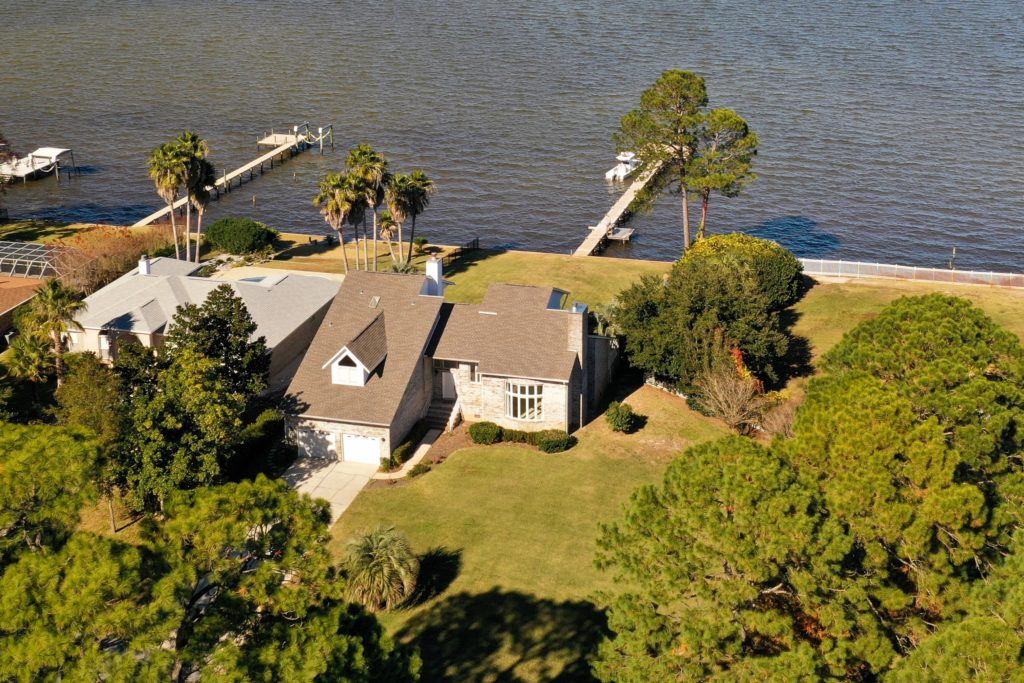
3. Hidden Cost of Buying a Waterfront Home.
Waterfront property is unique in the fact that homes and landowners typically don’t own the water itself (unless you’re purchasing a private pond or body of water contained entirely on your property). Federal, state, and local governments typically own and oversee the water, which often results in costs to lease the land bordering it. Work with your real estate professional to understand the cost associated with your property and if they offset property taxes.
4. Additional Responsibilities of Waterfront Property Ownership.
Waterfront properties often come with additional maintenance needs due to consistent exposure to salty air and moisture-filled climates. They can border pristine wetland habitats that can’t be disturbed. Lake, river, and ocean properties are often home to wildlife that should be considered and protected. All in all, before you purchase your dream waterfront property, ensure your real estate professional walks you through the specific responsibilities and community expectations of ownership.
5. Are Waterfront Properties a Good Investment?
While owning waterfront property can come with additional costs, maintenance, and challenges, but it also offers a variety of ways to maximize your ROI. Waterfront properties are often highly desirable rental properties. If you want to rent your property throughout the year, do some research on premium rental rates in your area (both short-term and long-term as permitted). Additionally, waterfront property can appreciate in value more quickly than other types of property given its limited availability. Waterfront Specialist, Courtney Liddle agree and adds “There is only so much waterfront land. They aren’t making any more of it. This is one of the reasons it is in such demand and so valuable.”

Whether it’s a cabin overlooking a winding river, a house on a large lake, or oceanfront views, waterfront property offers a variety of inviting ownership possibilities. Learn more about waterfront property available near you, and connect with a real estate professional who understands the important considerations and questions to ask before purchasing your dream waterfront property.
Bobby Norris Team Joins Hayden Outdoors in Fort Worth
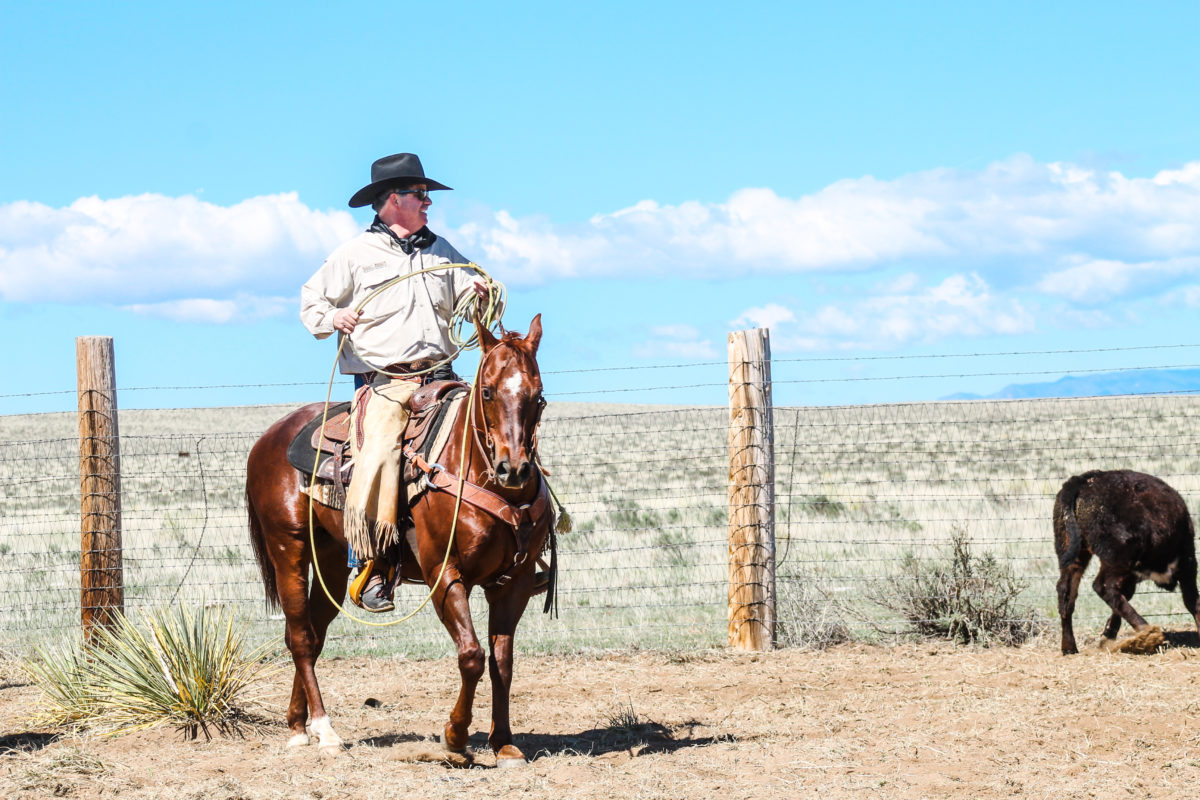
Rancher, horseman and real estate broker Bobby Norris recently made a move in the real estate industry, and the deal should send a ripple through the Texas ranch broker industry.
Bobby Norris and his team of agents in Fort Worth, Texas have partnered with the Hayden Outdoors Real Estate brokerage to help serve Texas and bring land, game ranches, livestock and working horse knowledge to accompany the firm’s already growing Lone Star team.
The move involves all of Norris’ team to switch brands to Hayden Outdoors, but the land specialists won’t miss a beat with real estate service and will increase exposure in Fort Worth, Dallas and Texas as a whole. Norris was most impressed with the marketing and advertising plan of the Colorado-based firm.
“The Hayden Outdoors marketing plan is second to none and recognizing this in past transactions made this move eminent. Their level of cutting-edge marketing is not done in Texas, and we are thrilled to join their team and serve our landowners with an incredible amount of real estate exposure. It’s light years ahead of the Texas land market.”
Dax Hayden, Managing Partner at Hayden Outdoors, knew this would supplement their footprint in Texas, the largest ranch market in the US. “Bobby and I see eye to eye on branding, knowledge and delivering landowners REAL marketing. After we agreed that this was a mutually beneficial, we were “all-in” on bringing their firm into our family. We’re just really excited to have their team join ours!”
Hayden Outdoors jumped into the niche marketing that Bobby Norris had experience with, and in a couple weeks they’ve launched multiple partnerships in the Cutting and Reining Horse industry. “The NCHA Futurity and World Finals Sponsorship made complete sense to me and with their promotion on the hit series Yellowstone, all parties are sure to benefit from the timing of this launch. Other Texas working horse and livestock events will surely fall in our marketing and event calendar. Having an experienced team of land brokers in this industry is key to serving landowners selling specialty properties,” said Dan Brunk, Director of Marketing for Hayden Outdoors.
Bobby Norris bring over a dozen qualified agents and brokers to the Hayden Outdoors team, specializing in equestrian facilities, game ranches, cattle ranches, luxury estates, rural ranchettes, and recreational properties in Texas. Ricky Gohmert will continue to hold the Managing Broker status in the State of Texas for Hayden Outdoors.
Bobby Norris Team Joining Hayden Outdoors:
Pictured Below:
Bobby and JJ Norris with sons Rhett (14) and Gates (17)
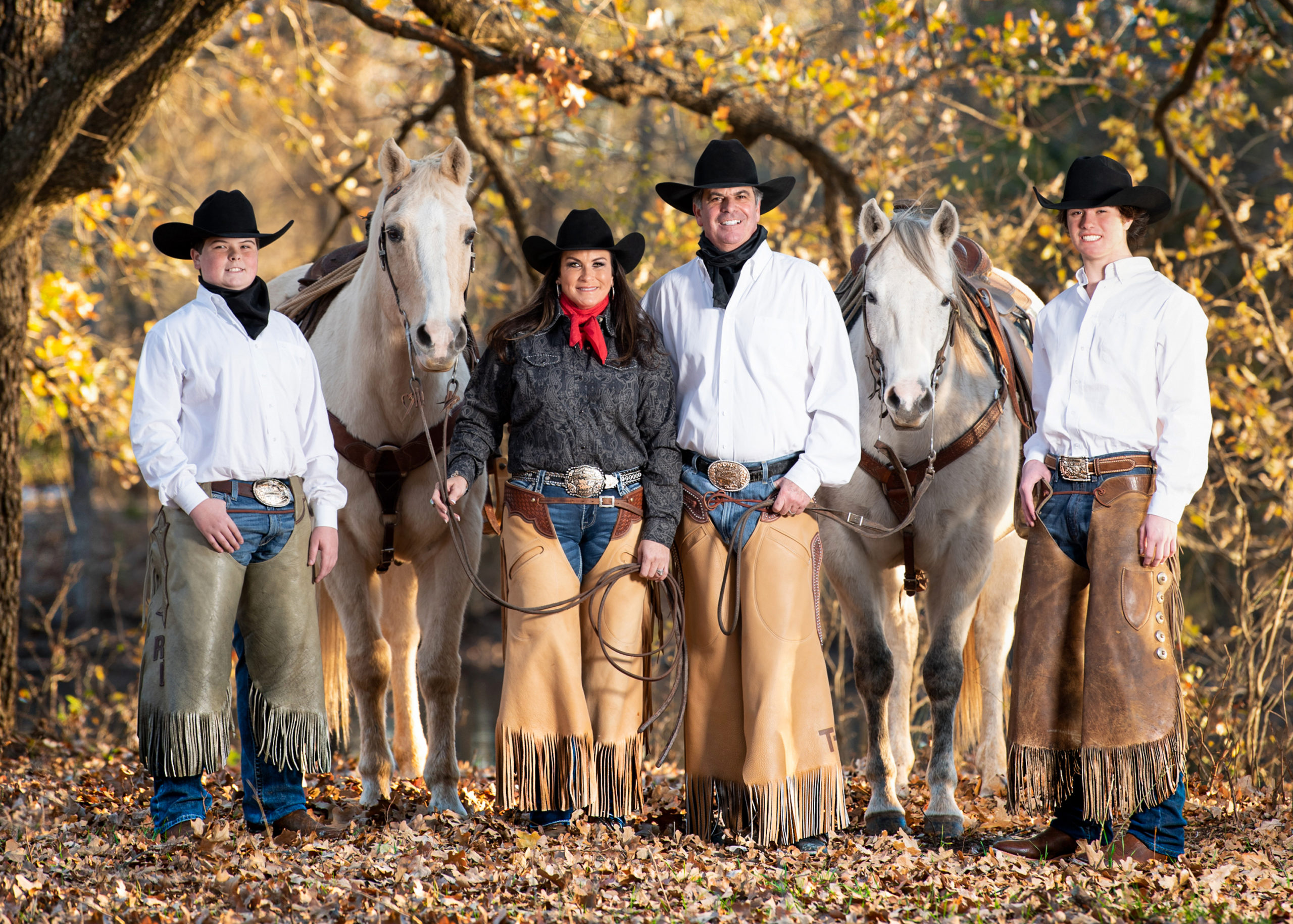
Your Guide to 1031 Exchanges: Upgrade to a Tax-Deferred “Replacement Property”
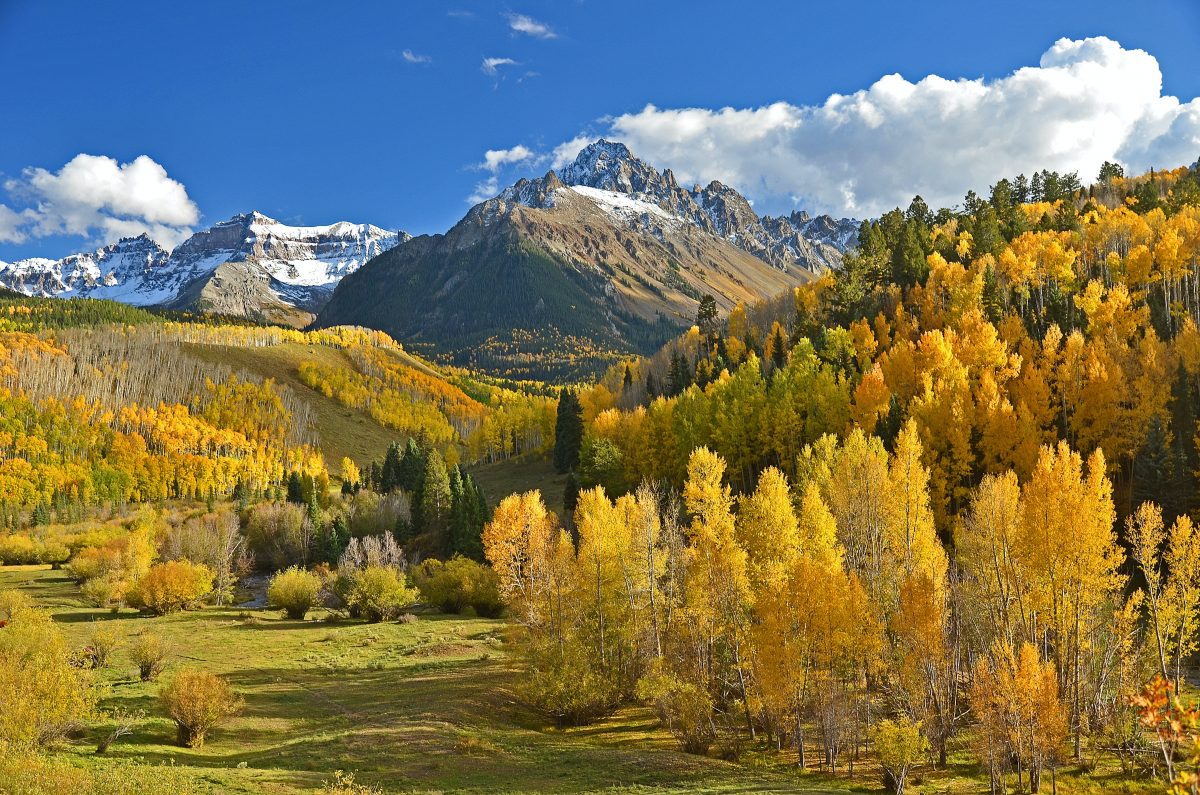
Article by:
Steve Chacon
First American Exchange Company
(303) 876-1161
schacon@firstam.com
As a large property owner or real estate investor, you might be familiar with 1031 exchanges. As a newcomer to investing, or as someone who is preparing to sell a long-held piece of real estate, you might not be. Either way, it’s important to understand the opportunities a 1031 exchange can offer you during your next real estate transaction, and you should consider taking action quickly. President Biden’s new tax proposal dissolves the possibility of deferring taxes on property gains over $500,000.
First, what exactly is a 1031 exchange?
Simply, it’s a process that allows you to sell an investment property (the key word here being investment) and then roll the proceeds into the purchase of a new investment property, preferably of equal or greater value, to defer all capital gains taxes.
Am I eligible for a 1031 exchange?
If you plan to take advantage of a 1031 exchange, it’s important to understand which types of properties and transactions are eligible. Your property must be an investment property; 1031 exchanges do not apply to primary personal residences. Investment properties are real estate purchases used to generate profit, such as office buildings, ranches, farms or rentals. If you’re looking to fully defer the tax ramifications of the sale, you’ll need to roll the money into the sale of a property that is of equal or greater value than the one you’re selling. This isn’t a requirement, but using the money to purchase property that costs less than the original will leave some tax exposure.
How do I accomplish a 1031 exchange?
There are specific steps you must take in order to take full advantage of the 1031 exchange tax deferment and it’s important to note that timing is paramount.
- Sell your property. This obvious first step starts the snowball process of rolling the money into a new investment property.
- Identify a qualified intermediary (QI), or middleman. While you don’t have to use a QI for the sale, the IRS does require some sort of exchange facilitator. A QI will have experience in this type of transaction, and will help ensure it is done properly. QIs typically charge between $800 – $1500 for this service.
- Find up to three new properties. Again, timing is key here. Upon the sale of your property, you’ll have a 45-day window to identify up to three “like-kind” new properties.
- Close on a new property. You will have 180 calendar days from the sale of the original property until you close on the purchase of the new or replacement property. Look to your QI to help manage this timeline.
Most importantly, don’t wait! Contact your real estate professional today to learn more about possible 1031 exchange opportunities. It might be the perfect time to invest in the ranch, farm or hunting property of your dreams.
Covenants: Good or Bad for My Property’s Value?

With rural properties – restrictive covenants needn’t be a dealbreaker as covenants can help maintain a property’s value.
During the course of a property search, land buyers – particularly those looking at acreage that’s been subdivided – will almost certainly encounter the concept of restrictive covenants.
Covenants, Conditions and Restrictions
CCRs – for short, are usage requirements (and limitations) placed on a property by a subdivider or developer. Layered atop any municipal zoning regulations, these rules further govern what a property owner can and can’t do with the property. Created to protect property values and owners’ abilities to enjoy their properties, covenants might prohibit certain activities, or set standards for home construction or other improvements.
Understandably, many buyers bristle at the concept of being told how a property can or can’t be used after it’s purchased. Experiences with suburban CCRs might only add to a buyer’s hesitation. In some in-town locales, covenants can be both stringent and wide-ranging; they might require vehicles to be garaged at all times, or have strictly enforced rules regarding yard-maintenance standards, or even the color palette available to a homeowner when painting a house. For many buyers, the concept of purchasing land carries with it a sense of individualism; an overabundance of rules and regulations in the form of covenants can tend to erase a buyer’s enthusiasm.
Are Covenants Still Relevant if I Live in The Countryside?
When it comes to purchasing rural property, though, covenants needn’t be a dealbreaker. Specific provisions can vary greatly, of course, but, in general, covenants applied to rural properties don’t tend to be as restrictive as CCRs one might encounter in a suburban neighborhood. Developers subdividing rural acreage tend to write covenants with the realities of “country” life in mind; they know that rural landowners use their properties in a variety of ways – keeping horses or other livestock, growing crops, constructing various types of outbuildings – and that marketability of land will depend heavily on preserving a buyer’s rights and options.
 As a result, covenants on a rural parcel might amount to little more than a short set of regulations that could easily align with a buyer’s intentions. It’s common to find prohibitions on manufactured homes, hog farms, and commercial marijuana cultivation (in locations where it’s otherwise legal at the state level). Often, rural covenants will specify that campers can be used only for short-term recreational purposes, and not as permanent residences. There might be minimum square footage requirements for homes, and home exteriors may need to fall within a broad color category, such as “earth tone.” Properties that are genuinely in ranch country – rather than in exurban locations – will generally have horse/livestock-friendly covenants, and accommodate numerous types of outbuildings.
As a result, covenants on a rural parcel might amount to little more than a short set of regulations that could easily align with a buyer’s intentions. It’s common to find prohibitions on manufactured homes, hog farms, and commercial marijuana cultivation (in locations where it’s otherwise legal at the state level). Often, rural covenants will specify that campers can be used only for short-term recreational purposes, and not as permanent residences. There might be minimum square footage requirements for homes, and home exteriors may need to fall within a broad color category, such as “earth tone.” Properties that are genuinely in ranch country – rather than in exurban locations – will generally have horse/livestock-friendly covenants, and accommodate numerous types of outbuildings.
 Covenants will generally include language prohibiting “nuisances”, but might not specifically define what constitutes a nuisance. This leaves the premise open to interpretation, and brings common sense into play. If an activity – an afternoon of target shooting, a bonfire, fireworks – infringes on your neighbors’ enjoyment of their property, including their peace and quiet, it could be defined as a nuisance and become the subject of a complaint to an owners’ association. For many buyers, though, that open-ended “no nuisances” language is a positive, helping set expectations for community norms before property purchases are made.
Covenants will generally include language prohibiting “nuisances”, but might not specifically define what constitutes a nuisance. This leaves the premise open to interpretation, and brings common sense into play. If an activity – an afternoon of target shooting, a bonfire, fireworks – infringes on your neighbors’ enjoyment of their property, including their peace and quiet, it could be defined as a nuisance and become the subject of a complaint to an owners’ association. For many buyers, though, that open-ended “no nuisances” language is a positive, helping set expectations for community norms before property purchases are made.
Are Some Nuisance Neighbors Good for Our Ag Economy?
By contrast, properties without covenants – and bordering other properties without covenants – offer much more freedom to prospective buyers; usage limitations are largely limited to local zoning regulations. However, that freedom comes with obvious risks, particularly when it comes to neighbors’ potential behaviors and their standards for property maintenance. If a neighbor engages in “nuisance” behavior – collecting junked vehicles, erecting shoddy outbuildings, engaging in loud or even dangerous activities – even the most independently minded landowner may suddenly adopt an appreciation for the concept of covenants.
Corporate Funding To Grow Organic Farm Production
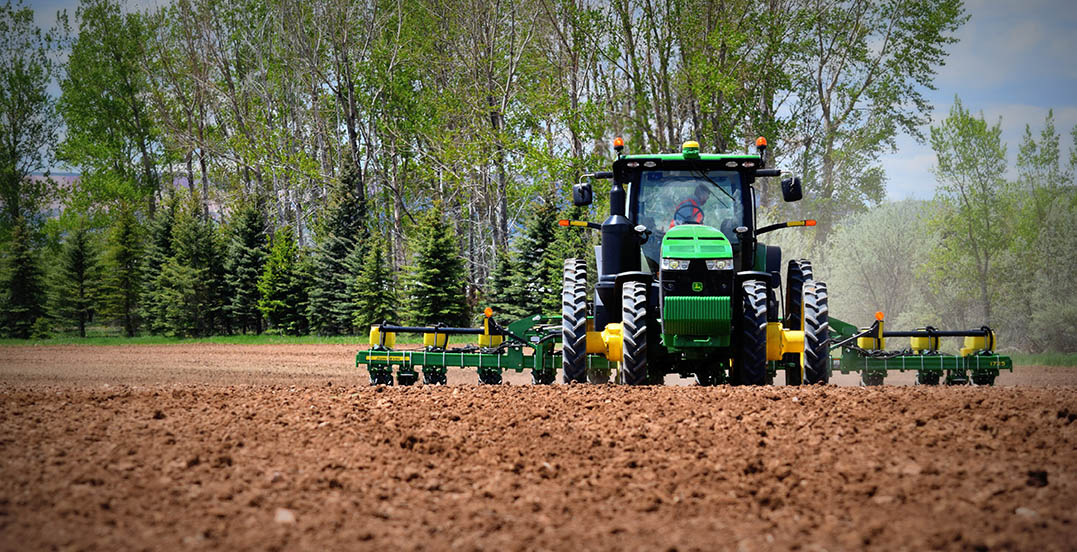
American Farmers are the most intelligent and innovative in the world. It is inspiring to me to see the advances in Agriculture in general. I look forward to the next 20 years of better production, better management and just generally producers thinking outside of the “box”.
Today’s tough commodities prices and increasing regulations has made it very tough on all farming operations. The best producers are actively looking for ways to maintain income with increased production, reduced costs and in some instances specialty crops and markets. Organic demand is very high and the ability of farmers to tap into organic profits is increasing. The certification of land and overall process to gain organic classification on ground has been a barrier to the amount of acres in organic production. New technologies with seed and operations have allowed the good organic producers to make sense of all of the “red tape” required to gain organic designation on lands. Increased yields with excellent demands for many specialty crops will allow producers to profit. With these possibilities come a good amount of risk. This is why excellent management is so critical in limiting risk and achieving better profits.
Recently an article was published on corporate funding of organic farms by well-known businesses that see a huge need for more organic farming. They go so far as to lend organic farmers funds to increase the volume and acreage of their organic farms. Read it in its entirety here.
I am confident in our producers nationwide learning the skills necessary to meet the demand of the general public with regards to organic and other specialty products. Please read the article below and see our website www.haydenoutdoors.com for organic farms for sale and land for sale in general!
Thanks!
Dax Hayden
Hayden Outdoors, LLC, Managing Partner
Landleader, LLC. National Director.
http://www.ecowatch.com/costco-lends-money-to-farmer-to-buy-more-land-to-meet-growing-demand-f-1891114277.html

















 As a result, covenants on a rural parcel might amount to little more than a short set of regulations that could easily align with a buyer’s intentions. It’s common to find prohibitions on manufactured homes, hog farms, and commercial marijuana cultivation (in locations where it’s otherwise legal at the state level). Often, rural covenants will specify that campers can be used only for short-term recreational purposes, and not as permanent residences. There might be minimum square footage requirements for homes, and home exteriors may need to fall within a broad color category, such as “earth tone.” Properties that are genuinely in ranch country – rather than in exurban locations – will generally have horse/livestock-friendly covenants, and accommodate numerous types of outbuildings.
As a result, covenants on a rural parcel might amount to little more than a short set of regulations that could easily align with a buyer’s intentions. It’s common to find prohibitions on manufactured homes, hog farms, and commercial marijuana cultivation (in locations where it’s otherwise legal at the state level). Often, rural covenants will specify that campers can be used only for short-term recreational purposes, and not as permanent residences. There might be minimum square footage requirements for homes, and home exteriors may need to fall within a broad color category, such as “earth tone.” Properties that are genuinely in ranch country – rather than in exurban locations – will generally have horse/livestock-friendly covenants, and accommodate numerous types of outbuildings. Covenants will generally include language prohibiting “nuisances”, but might not specifically define what constitutes a nuisance. This leaves the premise open to interpretation, and brings common sense into play. If an activity – an afternoon of target shooting, a bonfire, fireworks – infringes on your neighbors’ enjoyment of their property, including their peace and quiet, it could be defined as a nuisance and become the subject of a complaint to an owners’ association. For many buyers, though, that open-ended “no nuisances” language is a positive, helping set expectations for community norms before property purchases are made.
Covenants will generally include language prohibiting “nuisances”, but might not specifically define what constitutes a nuisance. This leaves the premise open to interpretation, and brings common sense into play. If an activity – an afternoon of target shooting, a bonfire, fireworks – infringes on your neighbors’ enjoyment of their property, including their peace and quiet, it could be defined as a nuisance and become the subject of a complaint to an owners’ association. For many buyers, though, that open-ended “no nuisances” language is a positive, helping set expectations for community norms before property purchases are made.
